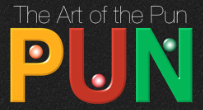History of the Pun
A pun is a form of wordplay that exploits multiple meanings of a term or similar-sounding words to create humor or emphasis. As one of the oldest forms of verbal wit, the pun has ancient origins and has evolved over time. Today, puns extend beyond spoken and written language and can be visually or graphically represented, showing that their playful nature can appeal to both words and images.
Ancient Beginnings
Puns have been part of human expression for thousands of years.
The earliest records appear in ancient Mesopotamia, Egypt, and
China, where Sumerian scribes and Egyptian hieroglyphics used
wordplay in written and visual forms. Around 2500 BCE, Sumerians
crafted puns in cuneiform, hinting at the wordplay potential within
their language. Ancient Egyptians employed puns in hieroglyphics,
often combining images and symbols to convey multiple meanings
simultaneously, particularly in religious and poetic texts. Chinese
literature, written with characters that could signify similar sounds,
also embraced puns, adding layers of meaning to poetry and
philosophical writings.
Greek and Roman Influence
The Greeks and Romans formalized puns as a literary and rhetorical
device. Greek playwright Aristophanes used puns and visual humor
in his comedies, while Roman satirists incorporated puns in written
and sometimes graphical forms, using symbols alongside words. Cicero, the Roman orator, and Ovid in “Metamorphoses,”
showcased puns to enrich their literary works, demonstrating the
art of combining wit with subtlety.
The Middle Ages to the Renaissance
While puns became less prominent in Europe during the Middle
Ages, they persisted elsewhere, notably in Persian and Arabic
poetry, where poets played with words and visual representations to
communicate layered meanings. The Renaissance revitalized
punning in Europe, especially through the works of William
Shakespeare.
Shakespeare’s plays, including Romeo and Juliet and A Midsummer Night’s Dream, are known for their rich verbal puns, and also for visual and situational humor. His skill in wordplay highlighted the pun’s ability to create wit, enhance themes, and give depth to characters.
Modern Usage and Visual Puns
With modern literature, art, and design, puns have continued to
develop beyond verbal play into visual forms. Artists and advertisers
increasingly use graphic puns, where visual elements represent puns
without words. In graphic design, cartoons, and advertisements, visual
puns engage audiences by playing with familiar imagery, challenging
viewers to recognize the double meanings.
Visual puns have thus become a staple in contemporary humor and advertising, adding an element of surprise and creativity that resonates across media.
Today, puns remain a widely appreciated form of expression, celebrated both verbally and visually. Whether through language or imagery, puns represent humanity’s enduring love for clever, layered communication—a timeless tradition of linguistic and graphic creativity that appeals to the intellect and the imagination alike. This book, “The Art of the Pun,” expands on the idea of the pun as both a linguistic and visual phenomenon, illustrating how puns can engage audiences with both words and images.
